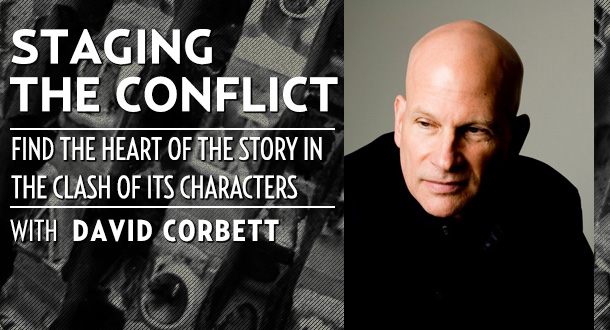
In this four-week workshop, award-winning author David Corbett will guide you through an exploration of how to frame the conflict of a story through compelling, essential characters.
Your Instructor: David Corbett, author of 'The Devil's Redhead' and 'The Art of Character'
Where: Online — Available everywhere!
When: This class is not currently enrolling. To be notified when it is offered again, Click Here
Enrollment: 15 students
Price: $399
Class Description
Compelling conflicts are rooted in compelling characters.
And in this 4-week workshop, David Corbett, prize-winning author of The Art Of Character, will guide you through an exploration of how to frame the conflict in a story through compelling, essential characters.
The class will first explore the two crucial roles creating the “Unity of Opposites,” the core conflict at the heart of the story: the protagonist and the opponent. This exploration will include establishing the battle of moral visions driving the action—the premise and the counter-premise—as well as understanding the values the characters honor and the worlds they seek to create, defend, or maintain.
Next, students will learn how to develop those moral visions and worlds through the secondary characters, with specific attention to their dramatic roles and functions, with an eye toward establishing “Four-Corner Conflict” in order to create moral complexity and heightened suspense and dramatic tension.
Finally, the class will explore how to use structure to tighten and underscore the conflict created through the characters, with special attention to tackling specific story structure problems: the love story, the mystery, and stories lacking an opponent, among others.
This class includes:
-
Four in-depth lectures from David
-
Writing assignments to be critiqued by David and your fellow classmates
-
Ongoing discussion and Q&A's
What This Class Covers
Week 1 — The Protagonist: The Moral Messenger
No story can move forward without understanding not just the protagonist’s outer goal but his inner/unconscious yearning, which establishes the stakes, determines his inner weakness, wound, or flaw, and predetermines the moral arc of the story
Week 2 — The Opponent: The Character of Conflict
To create a “Unity of Opposites,” you need an opponent with the desire, will, and power to destroy, deny, or claim for himself what the protagonist wants.
Week 3 — Supporting Characters: Creating a World
The protagonist and opponent do not act alone; they act on behalf of values they prize and worlds they cherish—values and worlds embodied in secondary characters who help create moral complexity and narrative richness.
Week 4 — Structure: The Scaffold of Story
Once your main and supporting characters are established, you need to find the best structural form for dramatizing the conflict to create tension and suspense as well as emotional impact.
Goals Of This Class
- How to identify the protagonist’s outer objective and inner yearning in order to establish the stakes; identify the character’s inner weakness, wound, or flaw; and recognize the moral arc of the story.
- How to distinguish between types of change in the protagonist—growth versus transformation—and what this means both in terms of character and structure.
- How to fashion the protagonist and opponent to maximize conflict and thematic richness.
- How to embody the premise in the protagonist and the counter-premise in the opponent.
- How to create compelling opponents who don’t fall into cliché, who honor the writer’s thematic intent, and who serve to enlarge the protagonist, thus enhancing the dramatic force of the story.
- How to create nuance and subtlety in the main characters, serve the hinge points of the plot, and bring to life the story world through the creation of compelling secondary characters.
- How to understand secondary characters with respect to the narrative functions they serve, without turning them into “plot puppets.”
- How to structure the story based on the core question asked of the protagonist.
- How to determine whether the protagonist faces an actual exterior opponent or instead faces a problem, an enigma, or a disaster—and how to craft the conflict if no opponent exists.
- How to structure stories where the conflict is not between adversaries per se, such as in the love story.
Additional Info


